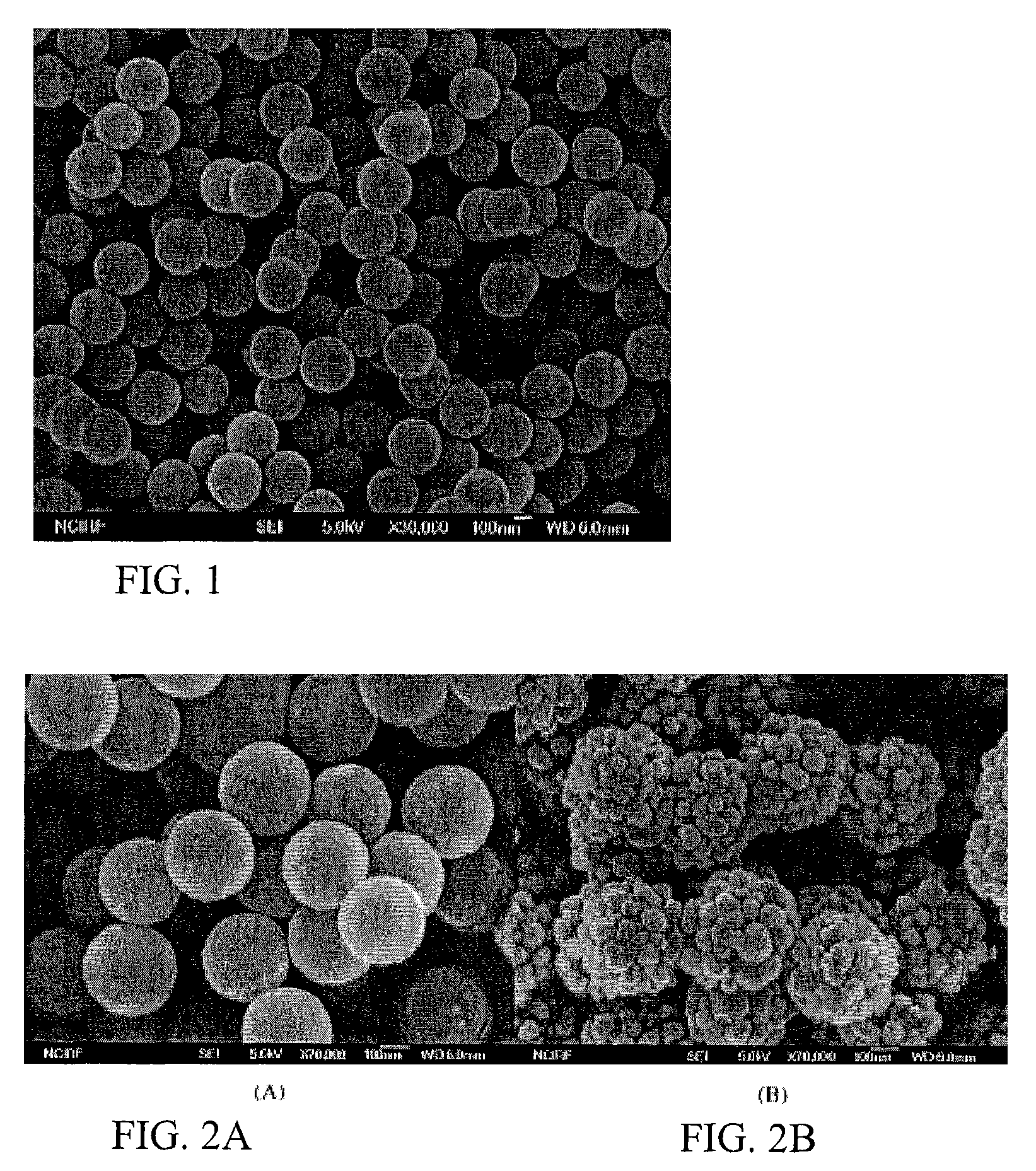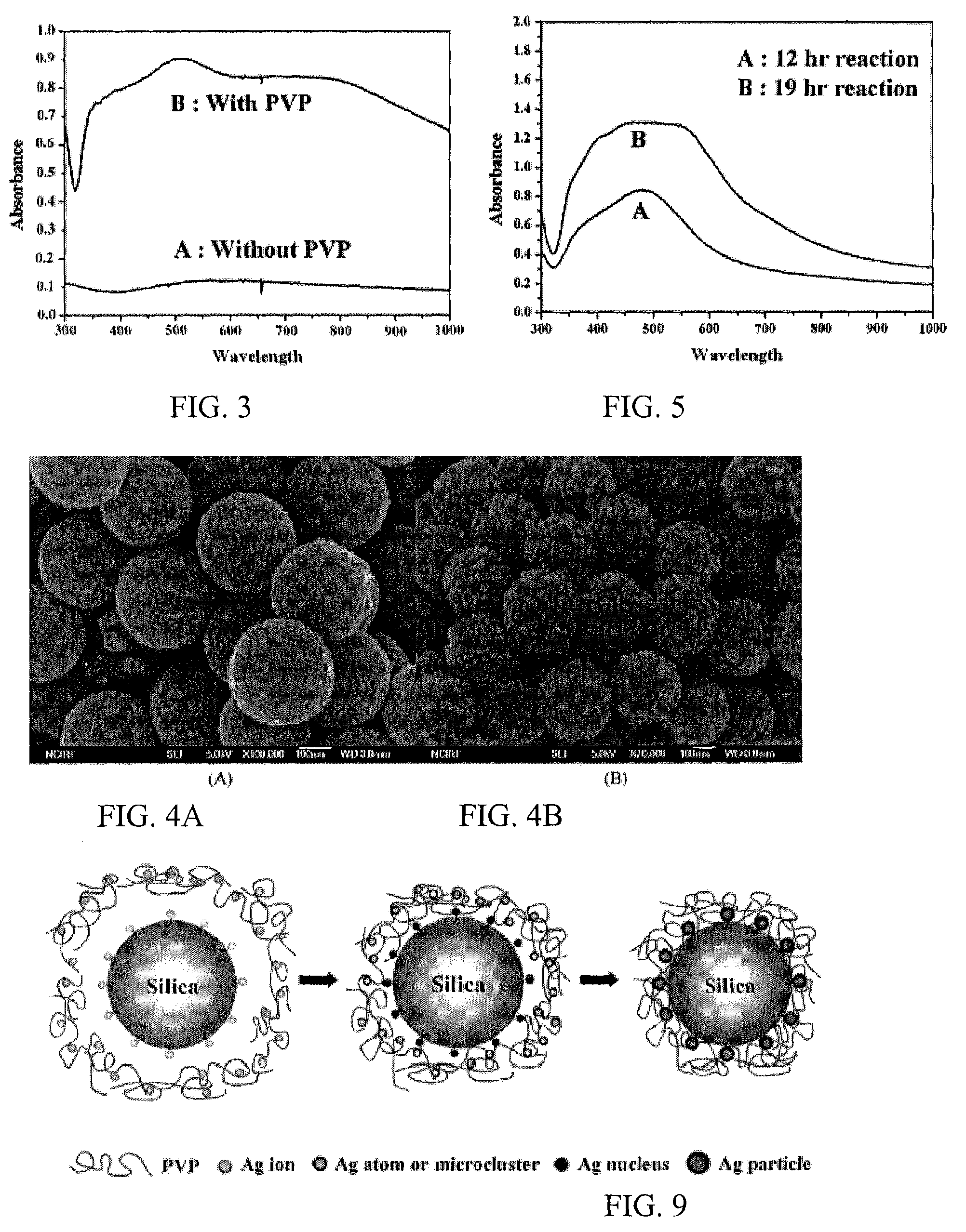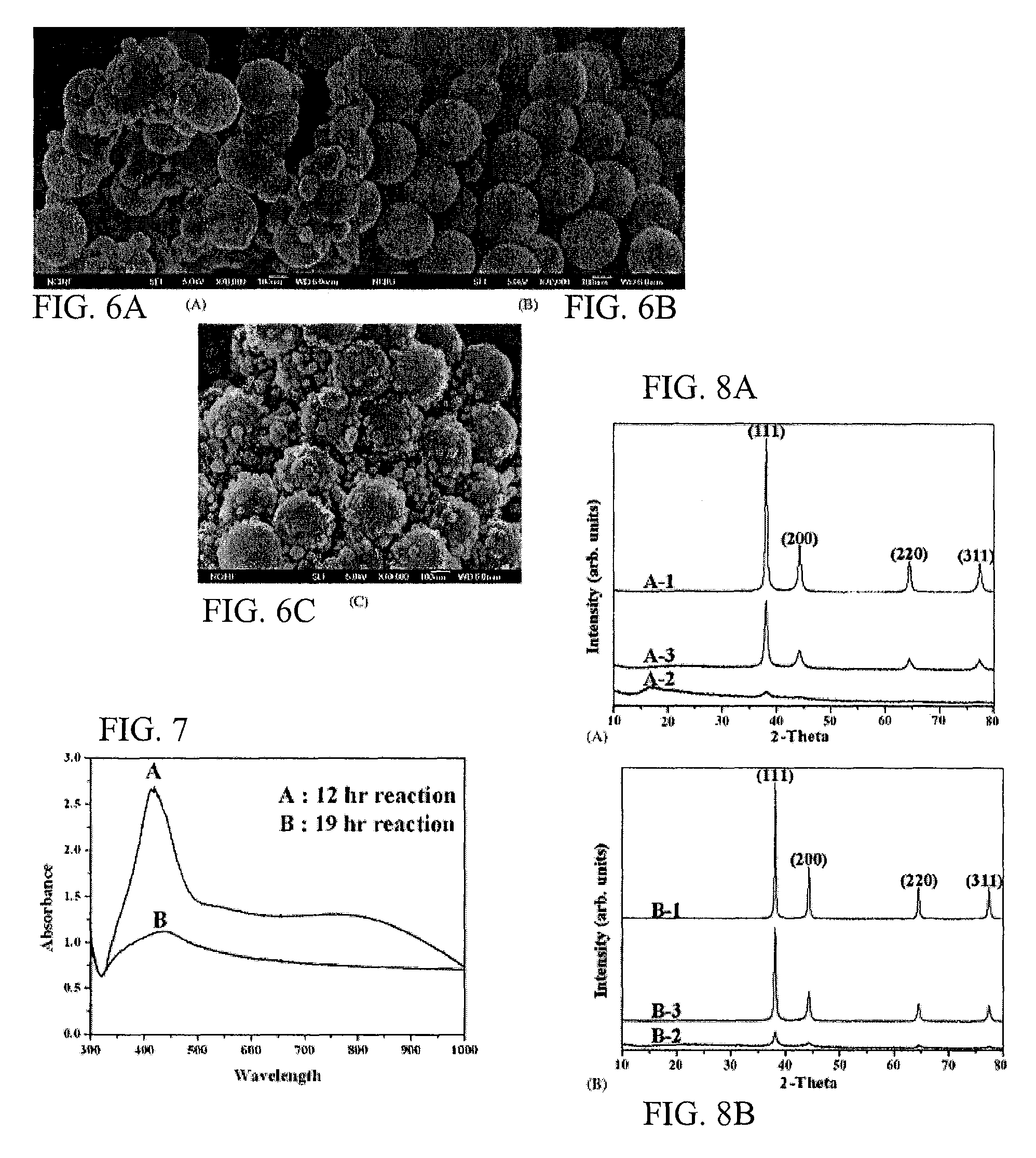Process for synthesizing silver-silica particles and applications
a technology of silversilica and nano-clusters, applied in the field of process for synthesizing silversilica particles and applications, can solve the problems of difficult control of one-pot, sol-gel-polyol process without control of all significant variables, and the continuous process is both more difficult to successfully complete and much more economical in time and processing costs, energy consumption, and the like. , to achieve the effect of preventing both aerobic and anaerobic bacterial growth, facilitating cleaning and disin
- Summary
- Abstract
- Description
- Claims
- Application Information
AI Technical Summary
Benefits of technology
Problems solved by technology
Method used
Image
Examples
Embodiment Construction
[0045]The examples described and drawings rendered are illustrative and are not to be read as limiting the scope of the invention as it is defined by the appended claims.
[0046]The equipment illustrated in FIGS. 15 and 16 show a hemispherical heater 501 heating a polyol suspension in a retort vessel 503. Signals of a temperature sensing device 607 may be monitored for purposes of process control for regulating the heating of the heater 501. The top 504 of the retort vessel closes and seals the retort. A long column 609 (partially shown) extends from the retort vessel and is cooled 605 by a cooling fluid, which condenses vapors from the retort vessel. An electric motor 601 rotates a shaft 602 connected to a pass-through sealed connector 603 to gently stir the polyol suspension in the retort vessel 503, the equipment keeping the temperature of the polyol suspension regulated and the polyol suspension mixed. A sampling port (not shown) may be included to take samples from the polyol sus...
PUM
| Property | Measurement | Unit |
|---|---|---|
| nucleating temperature | aaaaa | aaaaa |
| temperature | aaaaa | aaaaa |
| thickness | aaaaa | aaaaa |
Abstract
Description
Claims
Application Information
 Login to View More
Login to View More - R&D
- Intellectual Property
- Life Sciences
- Materials
- Tech Scout
- Unparalleled Data Quality
- Higher Quality Content
- 60% Fewer Hallucinations
Browse by: Latest US Patents, China's latest patents, Technical Efficacy Thesaurus, Application Domain, Technology Topic, Popular Technical Reports.
© 2025 PatSnap. All rights reserved.Legal|Privacy policy|Modern Slavery Act Transparency Statement|Sitemap|About US| Contact US: help@patsnap.com



